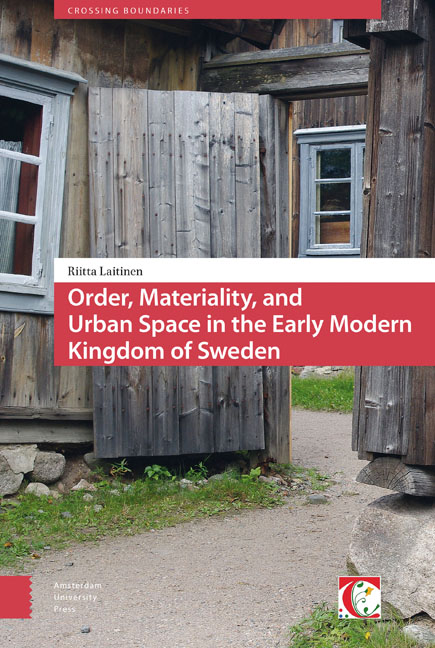Book contents
1 - Organizing Urban Dwelling
Published online by Cambridge University Press: 12 December 2020
Summary
Urban Turku Space: Small Houses and Central Yards
As no buildings have survived from early modern Turku before the late eighteenth century, nor are any plans or pictures of them available, not much is known with any certainty about their layout, form and content. The examination of dwelling patterns here cannot therefore be based on earlier research. Instead, with the help of archaeology and court sources, we need to start by inquiring into what kind of material living environment the buildings in seventeenth-century Turku might have provided. This inquiry, it must be stressed, is not a foray into material things as separate from the practices of dwelling or from the cultural meanings of homes, but sees the material houses as emerging from the same processes as social practices and cultural meanings.
Like any early modern European town, Turku had buildings housing the wealthy as well as the poor. Most residents in the town, like the majority of people in urban Europe, lived close to each other. Turku was not a big town, and its way of life could in some ways even be considered rural. The common image of an early modern Turku house is that of a plot of land surrounded by one or two houses, perhaps a barn, a sauna, possibly a workshop, a malt room and sheds. In the yard there would be a kitchen garden and some domestic animals. Indeed, signs of urban underdevelopment can be found in the source material. In the 1630s the Town Council complained that there still were too many houses that did not have chimneys; and in 1646 the Council asked those town householders still without glass in their windows to furnish their houses ‘as was the custom in other towns’. Cows being herded through the streets and pigs escaping from the yards added to the countryside feel of the town.
However, this rural image of seventeenth-century Turku is too strongly influenced by extrapolation from eighteenth-century sources. One of the most widely-used sources to describe the material environment of early modern Turku is Daniel Juslenius’ Aboa vetus et nova from 1700. This is the earliest extant comprehensive description of the town that we have, and it describes Turku as a low-rise grey town with beautiful gardens and trees.
- Type
- Chapter
- Information
- Publisher: Amsterdam University PressPrint publication year: 2017



